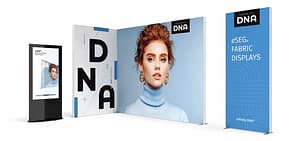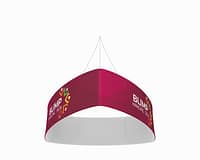In the dynamic world of event planning and marketing, the visual impact of your setup can make or break the experience for your audience. Waveline media walls have emerged as a popular choice for brand promotions, product launches, and corporate events. These backdrops not only establish a visual identity but also serve as a canvas for storytelling. Among the various designs available, curved and flat media walls stand out as two primary options. Each has unique advantages that can enhance your event’s aesthetic and functional appeal. Let’s explore the elegance of curved media walls and compare them to their flat counterparts to determine which design truly reigns supreme.
Embracing Elegance: The Curved Wave of Media Walls
Curved Waveline media walls bring an air of sophistication to any event. Their gentle arcs create a soft, inviting atmosphere that draws guests in and encourages engagement. This design mimics natural forms, helping to break the rigidity associated with traditional flat backdrops. The seamless flow of a curved wall can soften the overall environment, making it feel more welcoming and less formal. Whether used for a corporate function or a casual gathering, the appeal of curves can add a touch of elegance that enhances the audience’s experience.
Moreover, the 3D effect of curved media walls allows for creative usage of space. These designs can create a sense of depth and dimension that flat walls simply cannot achieve. By strategically positioning the media wall, planners can guide the flow of foot traffic, directing attendees’ focus where it’s needed most. This functionality is particularly beneficial for trade shows and promotional events, where engagement is key. Curved walls can also serve as effective photography backdrops, framing subjects in a more dynamic way than flat surfaces, creating visually stunning images that are perfect for social media sharing.
Finally, the adaptability of curved media walls is one of their most significant advantages. They come in various sizes and can be customized to suit any brand’s aesthetic. From adding graphics to choosing colors that resonate with your target audience, the possibilities are nearly endless. This versatility ensures that curved media walls can meet the specific needs of diverse events, making them a worthy investment for businesses looking to stand out. When combined with lighting and other design elements, the elegant curves can create an immersive environment that leaves a lasting impression.
Flat vs. Curved: Which Waveline Design Reigns Supreme?
When it comes to functionality, flat Waveline media walls have their own set of advantages. They provide a straightforward, clean backdrop that is ideal for displaying logos, slogans, and promotional graphics with clarity. The simplicity of a flat wall can be particularly effective for events that prioritize messaging over aesthetics. For corporate functions where professionalism is key, a flat media wall can project a sense of stability and reliability that aligns with the brand’s values. Additionally, flat walls are often easier to transport and set up, making them a practical choice for busy event planners.
However, the visual engagement that curved walls offer cannot be overlooked. While flat designs may work well in more traditional settings, they may lack the captivating quality that a curved wall provides. Curved media walls can also create a more immersive experience by inviting viewers to approach and interact. This interactive element can foster connections and conversations that are crucial for networking events or product launches. In settings where audience engagement is crucial, the dynamic nature of a curved backdrop can make a profound difference in the overall impact of the event.
Ultimately, the choice between curved and flat media walls will depend on the unique needs of your event. While flat walls may excel in simplicity and clarity, curved walls offer a level of sophistication and engagement that can elevate the audience’s experience. The decision should take into account factors such as the event’s atmosphere, branding goals, and logistical considerations. By carefully weighing these factors, planners can choose the waveline design that best fits their vision, ensuring a memorable and visually striking event.
In conclusion, both curved and flat Waveline media walls have distinct advantages that cater to different event needs. Curved media walls embrace elegance and fluidity, creating an inviting atmosphere that encourages interaction and engagement. On the other hand, flat media walls offer simplicity and clarity, making them ideal for straightforward branding and messaging. The ultimate choice between the two should be guided by the specific goals of the event and the experience you wish to create for your audience. By understanding the unique benefits of each design, event planners can craft unforgettable experiences that resonate with attendees long after the event has concluded.



